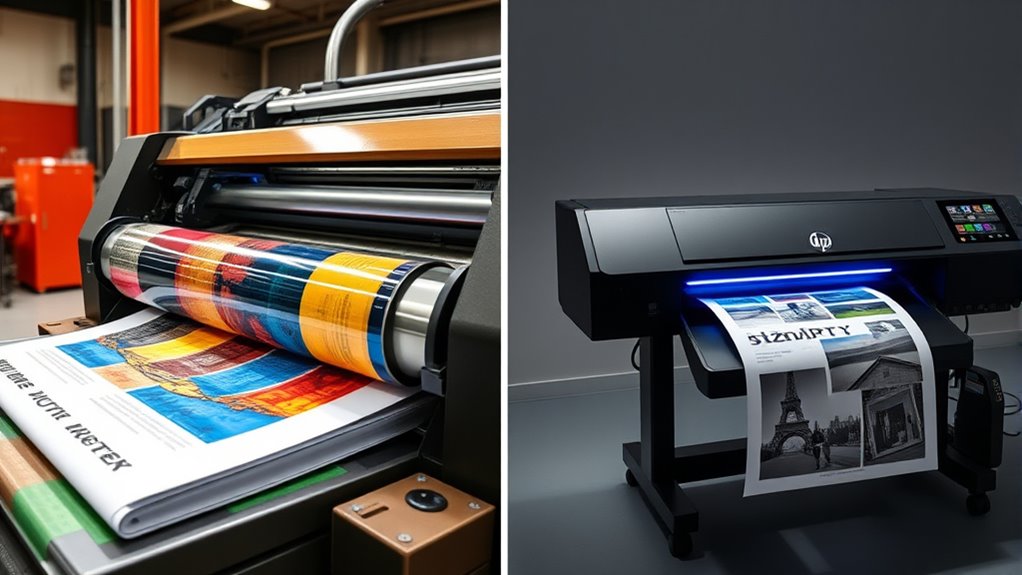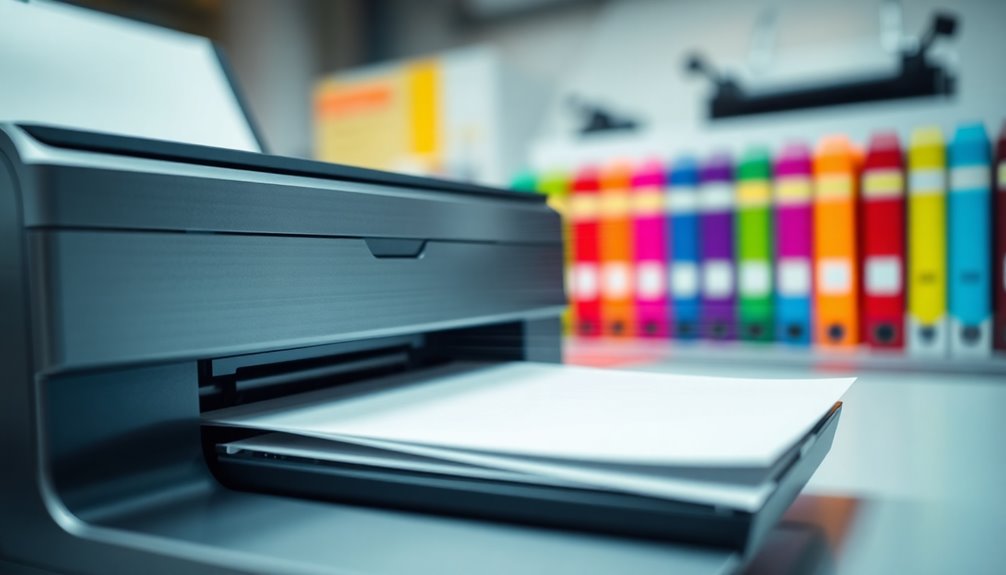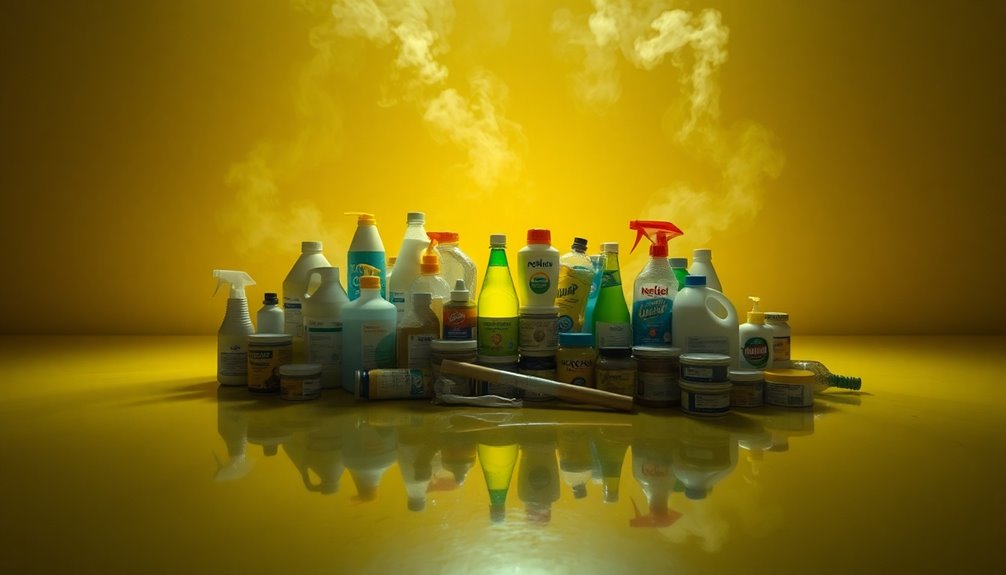When choosing between offset and digital printing, consider your project size and timeline. Offset printing offers high-quality colors and is cost-effective for large runs, but requires more setup time. Digital printing provides quick turnaround and flexibility for small quantities, with excellent color accuracy that’s improved over time. Understanding these differences can help you select the best method for your needs—keep exploring to discover which option suits your project perfectly.
Key Takeaways
- Offset printing offers superior color fidelity and is cost-effective for large-volume projects, while digital printing provides quick turnaround and is ideal for small runs.
- Offset presses require higher setup costs but deliver consistent high-quality results, whereas digital printing has lower initial costs and flexible adjustments.
- Offset is best suited for branding materials, magazines, and brochures, while digital excels in short runs and rapid delivery.
- Digital printing has improved in color accuracy, but offset still maintains more precise color consistency for large batches.
- Both methods can produce high-quality outputs, with choice depending on project volume, timeline, and budget.

Have you ever wondered how printed materials are produced and what differences exist between various printing methods? When it comes to offset and digital printing, understanding their unique processes helps you choose the right option for your project. One of the key factors to consider is color accuracy. Offset printing typically delivers superior color richness and consistency, especially for large runs. Its use of precise ink mixing and well-calibrated presses ensures that colors stay true to your original design, making it ideal for branding materials, high-quality brochures, and magazines. Digital printing, on the other hand, has improved considerably over the years. While it might not match offset in absolute color fidelity, it offers impressive color accuracy for short runs and quick turnarounds. Advances in digital press technology mean you can get vibrant, detailed images with less setup effort, though some color variations might occur from one print to another, especially if you’re working with multiple batches. Additionally, color fidelity has become more consistent in digital printing due to improved calibration techniques.
Frequently Asked Questions
Which Printing Method Is More Environmentally Friendly?
You’ll find digital printing more eco-friendly overall because it uses less resource consumption and produces less waste. Its eco friendliness comparison shows it consumes fewer inks and materials, making it better for the environment. Plus, digital printing’s efficient setup reduces energy use and unnecessary paper, whereas offset printing often involves more resource-intensive processes. If sustainability matters to you, digital printing is the more environmentally conscious choice.
Can Both Printing Methods Be Used on All Materials?
Think of printing methods as versatile tools—while both can handle many materials, neither is a one-size-fits-all solution. Offset printing excels with large runs of paper, offering high print reliability, but struggles with plastics or unusual materials. Digital printing offers broad material versatility and quick customization, yet sometimes sacrifices print reliability. So, you need to choose based on your material type and project needs, not just the method.
How Do Color Matching Capabilities Compare Between the Two?
You’ll find that offset printing generally offers superior color fidelity and consistency, making it ideal for large runs requiring precise color matching. Digital printing, while improving, may sometimes show slight variations in color due to its process, but it’s excellent for quick, small batches. If you prioritize exact color matching and consistent quality, offset printing is your best choice. For flexibility and fast turnaround, digital printing still provides good, reliable results.
What Are the Maintenance Requirements for Each Printing Type?
You’ll find offset presses require regular press maintenance, like cleaning rollers and inspecting plates, while digital printers mainly need ink replenishment and occasional hardware updates. Offset machines demand more hands-on care due to their complex components, but they handle high-volume runs efficiently. Digital printers are simpler to maintain, offering quicker setups. Both need routine checks, but offset presses need more time and attention to keep them running smoothly.
Are There Any Limitations on Print Size or Volume?
You might face some print size limitations with digital printing, especially for very large formats, whereas offset printing generally handles bigger sizes more easily. Volume restrictions also differ; digital is ideal for small to medium runs, but for high-volume printing, offset is more cost-effective and efficient. Keep in mind that both methods have specific constraints, so your choice depends on your print size needs and expected volume.
Conclusion
When choosing between offset and digital printing, remember they each shine in different ways. Offset offers high-quality, cost-effective large runs—perfect for big projects, while digital provides quick turnaround and personalization, ideal for smaller jobs. Think of offset as the steady, reliable workhorse and digital as the innovative, flexible artist. By understanding their strengths, you can select the right method, ensuring your print projects are both stunning and efficient—like finding the perfect balance between tradition and modernity.









